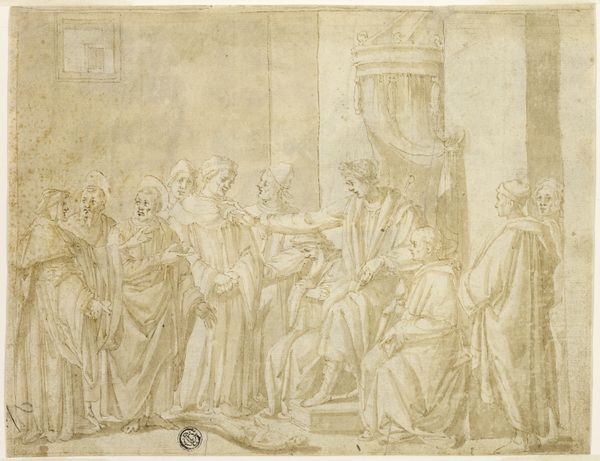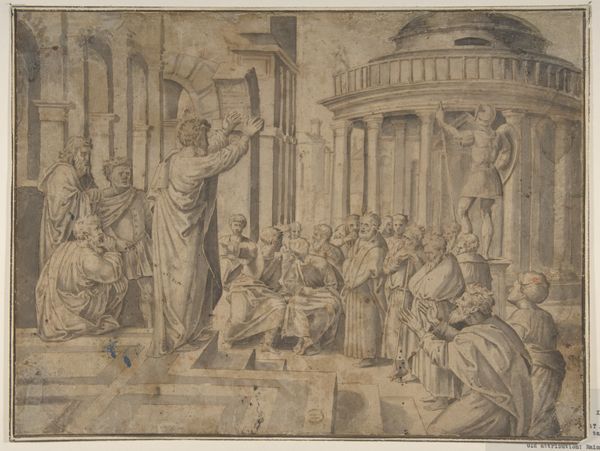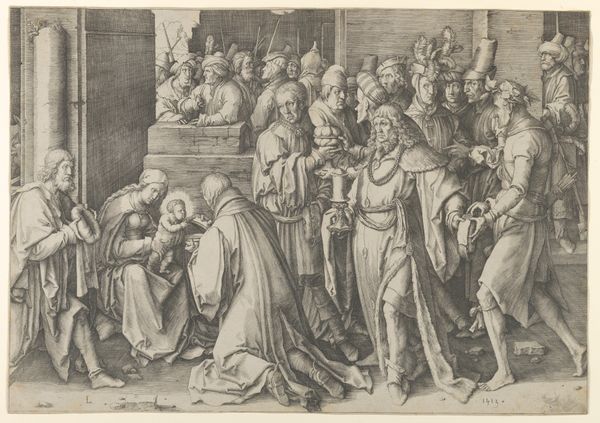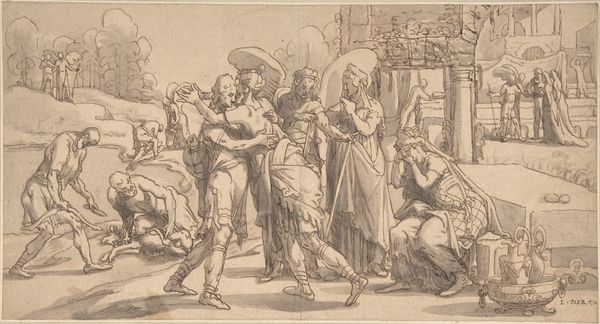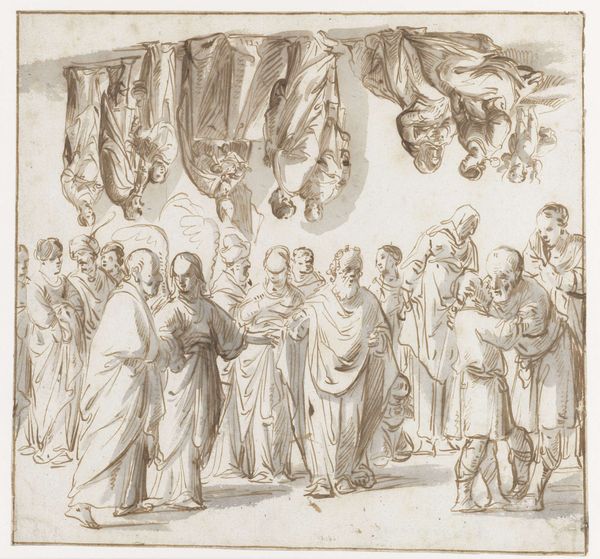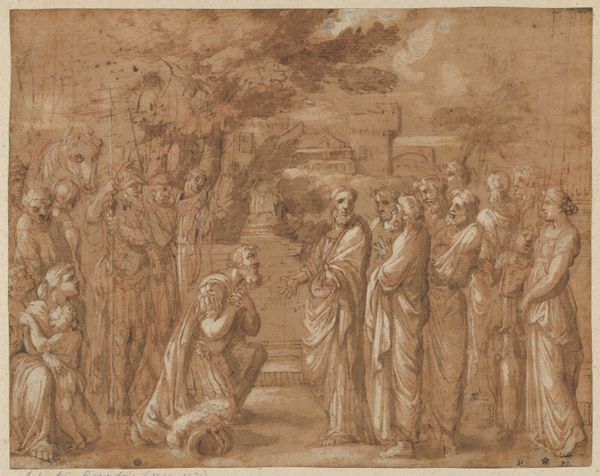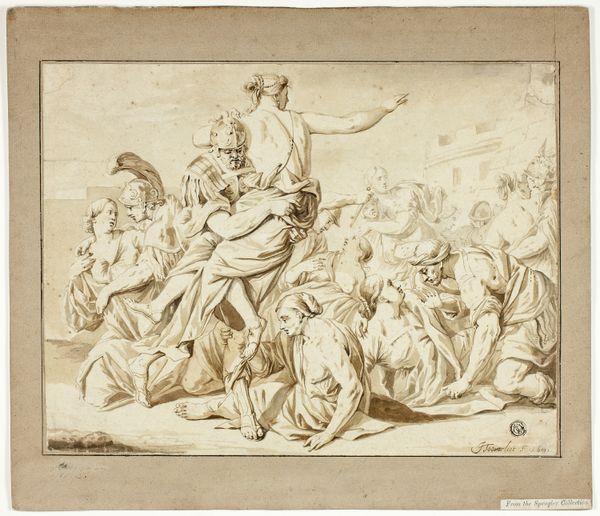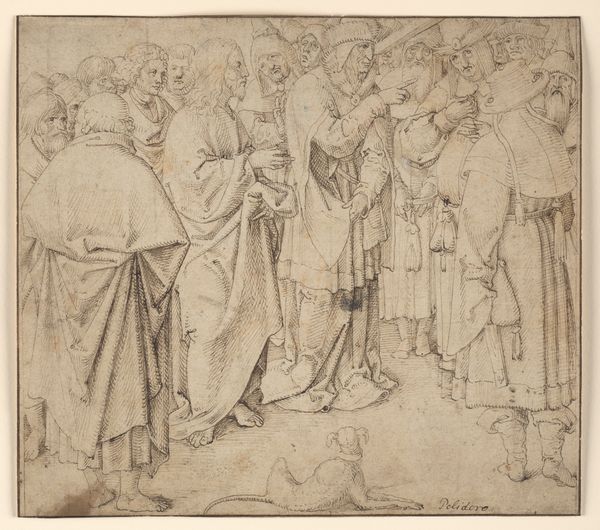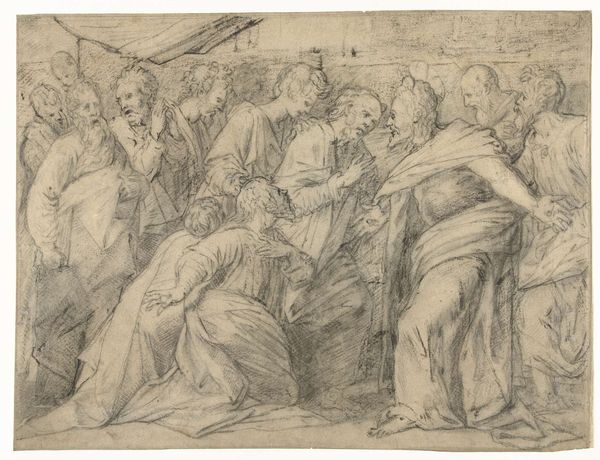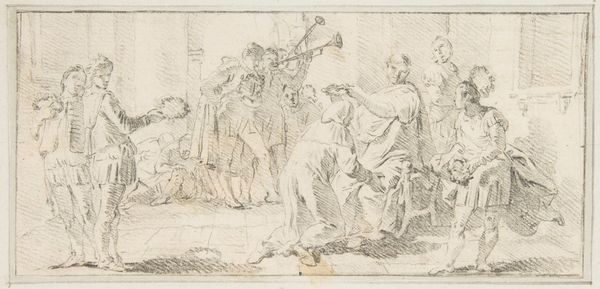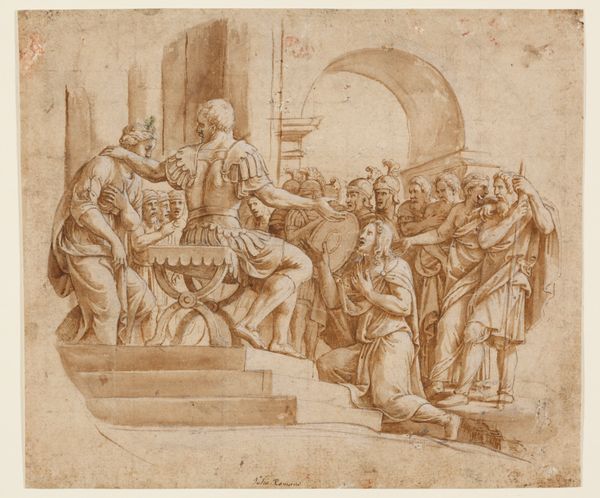
drawing, print, paper, ink, pen
#
portrait
#
drawing
# print
#
pencil sketch
#
charcoal drawing
#
figuration
#
paper
#
ink
#
pencil drawing
#
pen
#
genre-painting
#
history-painting
#
watercolor
Dimensions: 5-11/16 x 6-1/8 in. (14.4 x 15.5 cm)
Copyright: Public Domain
Curator: Today, we are looking at "A Deathbed Scene," an intriguing drawing whose authorship remains anonymous. Made sometime between 1600 and 1700, it employs pen, ink, and potentially watercolor on paper. The piece is currently held at the Metropolitan Museum of Art. Editor: The moment I see this drawing, I feel this strange mixture of somberness and intense engagement. It feels crowded but focuses attention on the dying figure in the bed. The lines are dynamic, especially around the hands, making it look very much alive despite the subject matter. Curator: It's fascinating to consider the historical context of such imagery. Deathbed scenes were quite prevalent in art, often commissioned as memento mori—reminders of mortality. How do you see this drawing engaging with that tradition, given its presentation to modern audiences? Editor: I think it’s impossible to separate this artwork from the social circumstances it was in. The artwork's creation aligns with increased life expectancy that was tied to race, sex, or socio-economic conditions; thus, the artwork’s access and representation could reinforce particular death narratives. Curator: Indeed. These scenes were not simply about accepting death; they often depicted the ideal "good death," surrounded by loved ones, with proper religious rites, serving as a lesson. Given that we don’t know its patron or function, could we even say that the artist created this piece for religious edification or commemoration? Editor: Possibly. But in today’s cultural context, I see the work in the same light as other genre paintings that deal with history or with mortality. Also, considering that many of the other figures surround and bear witness, the drawing emphasizes a communal act of witnessing grief and loss. How do their roles and identities impact how death is presented in art? How does this visual presentation affect those who identify? Curator: Good point. I'm not sure the artist would be thinking of the gender and political issues regarding accessibility that exist today, but looking at it today, "A Deathbed Scene" compels us to think about our perceptions of life and how societal hierarchies dictate mortality and memorialization, while forcing us to consider it in light of those present to support the ill person, and not solely as a private reckoning. Editor: Absolutely. It makes me question whose deaths get recorded, and by whom? What is represented in such art helps influence attitudes in modern society and should always include diverse intersectional realities of identity, gender, and race, so viewers can engage with the themes with historical acuity.
Comments
No comments
Be the first to comment and join the conversation on the ultimate creative platform.
